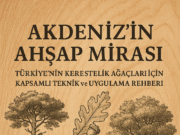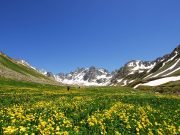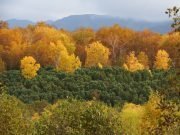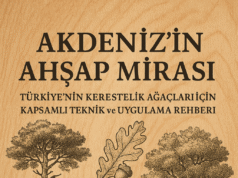deforestation, It means cutting trees without the aim of replacing or re-establishing any tree union. In some cases, the cause of deforestation turns out to be the direct use of trees (to obtain fuel, building materials, paper, etc.). In some cases, trees are cut down to open farmland or pasture, or to expand urban areas.
Tree losses can also occur due to unintentional reasons such as natural disasters. Because of the benefits that forests provide to the soil, water resources, climate and direct human health, the consequences of deforestation are in many cases irreversible.
The disappearance of forests and wooded areas, which serve as natural carbon sinks, causes the carbon dioxide gas stored in these areas to be released back into the atmosphere and increase the greenhouse effect. Dünyadaki bitki ve hayvan türlerinin %70’inin ormanlık alanlarda yaşadığı tahmin ediliyor.
Deforestation can also result in the extinction of these species. This poses a great threat not only to biodiversity, but also to human communities, whose medical research and life resources depend entirely on plant and animal species.
When trees are unable to hold and protect the soil, it is inevitable that the soil will be exposed to erosion, flooding and flooding. Trees also play an important role in the water cycle in the world, with the water vapor they capture and release into the atmosphere.
As a result of deforestation, the amount of water vapor and precipitation in the atmosphere decreases, the water quality in rivers and lakes decreases and human health is adversely affected. The combination of all these factors results in hotter and drier climatic conditions, which can result in desertification in some parts of the world.
TEMA çölleşmeyi, “çöllerin doğal yaygınlaşması değil, kurak, yarı kurak ve yarı nemli alanlardaki arazi bozulumu” olarak tanımlıyor.2 Çölleşme ile biyolojik açıdan verimli araziler çorak alanlara dönüşüyor. Ormansızlaşmanın yanısıra, kuraklık, iklim değişikliği, aşırı ekim, aşırı otlatma ve uygun olmayan sulama uygulamaları da çölleşmeye sebep olup dünyadaki en yoksul ve hassas insan topluluklarını olumsuz yönde etkilemeye devam ediyor. Bu nedenledir ki çölleşmenin önlenmesi veya tersine çevrilmesi, kurak alanlar üzerindeki baskıların azaltılmasının yanı sıra, yoksullukla mücadele açısından da önem taşıyor. Ormanların tüm karasal türlerin %80’ine ev sahipliği yaptığı hesaplanıyor. 1990-2015 yılları arasında gezegendeki orman alanı toplam karasal alanların %31,7’sinden %30,7’sine indi.4 Kuraklık ve çölleşme nedeniyle yılda 12 milyon hektar tarım alanı, (Birleşik Krallık arazisinin yarısı kadar) işlevsiz hale geliyor. En düşük gelir seviyesine sahip nüfusun %74’ü toprak bozulmasından doğrudan etkileniyor.
Along with deforestation, Land Degradation can also contribute to food security, carbon emissions, loss of biodiversity, increase in pests, decrease in clean waterIt has a significant impact on societies and economies with its impact on the environment and the increase in the vulnerability of the areas it affects and the populations living on them to climate change.
Kavram, “Arazinin insan faaliyetlerinden kaynaklanan nedenlerle, doğal süreçlerle daha da şiddetlenen ve boyutları iklim değişikliği ve biyoçeşitlilik kaybı nedeniyle sıklıkla artan şekilde, biyolojik ve ekonomik üretkenlik kapasitesinin herhangi bir şekilde azalması veya kaybedilmesi”6 olarak tanımlanı- yor. UNCCD verilerine göre dünya üzerindeki kullanılabilir arazilerin %25’i bozulmuş olup bunun neden olduğu ekonomik kaybın yılda 40 milyar dolar olduğu tahmin ediliyor. Eylül 2015’te Birleşmiş Milletler üyesi tüm ülkelerce kabul edilen 17 Sürdürülebilir Kalkınma Hedefi’nden 15.’si ise konuyla ilgili en temel çerçeveyi teşkil ediyor. Söz konusu madde; ormanların sürdürülebilir yönetimi, çölleşme ile mücadele, karasal ekosistemlerin sürdürülebilir kullanımının korunması, geliştirilmesi ve desteklenmesi, karasal bozulmanın durdurulması ve iyileştirilmesi ve biyoçeşitlilik kaybının engellenmesini içeriyor
Source: Sustainability Guidelines






























